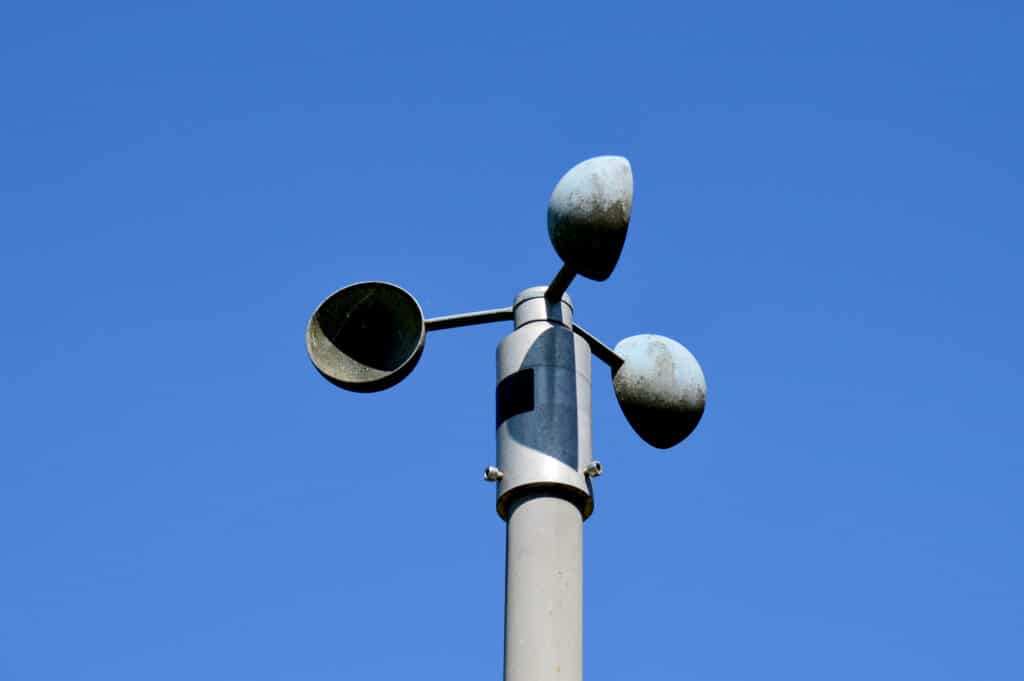How to Keep and Take Care Of Your Anemometer to Ensure Durability
How to Keep and Take Care Of Your Anemometer to Ensure Durability
Blog Article
All You Required to Understand About Anemometers: How They Work, Why They Matter, and Where to Make use of Them
Anemometers, though frequently forgotten in the realm of clinical instruments, play an important role in different areas, providing useful insights into wind rate and air movement patterns. As we dig into the details of anemometer modern technology, we will discover the internal operations of these devices, their significance, and the key factors to consider when choosing the appropriate anemometer for certain applications.

Anemometer Fundamentals
A crucial tool used to measure wind speed and instructions, the anemometer plays an essential duty in weather forecasting and different markets. An anemometer typically consists of 3 or 4 cups that revolve in the wind, a vane that points right into the wind, and sensors to track the motions or rotations.
There are different types of anemometers available, consisting of cup anemometers, vane anemometers, hot-wire anemometers, and sonic anemometers, each with its distinct features and applications. Cup anemometers are commonly used for basic wind speed dimensions, while vane anemometers are favored for directional measurements.
Concepts of Anemometer Operation
Building on the foundational understanding of anemometer essentials, the concepts of anemometer procedure elucidate the auto mechanics behind wind speed and instructions measurements. Mug anemometers, for circumstances, have 3 or even more mugs that catch the wind, triggering them to spin faster as the wind rate rises. Hot-wire anemometers count on a heated wire that cools down as wind passes over it, with the price of cooling identifying the wind rate.
Value of Anemometers
The importance of anemometers in weather forecasting and different industries can not be overemphasized. Anemometers play a vital role in determining wind speed and direction, providing necessary data for weather condition forecasting, climate researches, ecological surveillance, and air travel operations. Meteorologists rely upon anemometers to gather exact wind information, helping them recognize climate patterns, forecast storms, and issue prompt cautions to the public. In markets such as building, agriculture, renewable resource, and maritime procedures, anemometers are made use of to maximize processes, guarantee safety, and increase performance. For instance, wind ranch operators make use of anemometers to evaluate wind conditions and optimize electrical power production from wind generators. In the maritime market, anemometers help ship navigating by giving real-time wind details to captains, aiding them make notified choices to make certain secure trips. Overall, anemometers are indispensable devices that add dramatically to safety, performance, and informed decision-making in weather forecasting and a vast array of markets.
Applications Throughout Numerous Industries
Applications of anemometers extend throughout diverse sectors, showcasing their adaptability and utility past meteorology. In the renewable energy market, anemometers play a critical function in assessing wind conditions for wind farm positionings, ensuring optimum power production. Industries like building and mining make use of anemometers to keep an eye on wind rates, important for safety methods, particularly when operating at heights or in open-pit mines where solid winds can position threats. Anemometers are likewise indispensable in the air travel market, assisting pilots website link in recognizing airspeed and wind instructions for risk-free liftoffs and landings. The maritime market take advantage of anemometers for ship navigating, aiding sailors anticipate climate modifications and adjust paths accordingly. In agriculture, anemometers aid farmers in handling plant splashing by providing real-time information on wind speed to prevent drift. Additionally, anemometers find applications in heating and cooling systems to maximize airflow and improve power efficiency in buildings. The diverse usage situations of anemometers highlight their significance throughout different sectors, highlighting their indispensable role in boosting functional security and efficiency (anemometer).

Picking the Right Anemometer for Your Needs
For general objectives, a cup anemometer is suitable for web measuring wind rate, while a vane anemometer supplies wind instructions information. Hot-wire anemometers are optimal for reduced airspeed measurements, and ultrasonic anemometers provide high accuracy and toughness.

Conclusion
In verdict, anemometers play a vital role in gauging wind rate and instructions throughout various markets. It is essential to think about the importance of anemometers in order to make enlightened decisions when choosing image source the most appropriate device for measuring wind conditions.
There are various types of anemometers available, consisting of mug anemometers, vane anemometers, hot-wire anemometers, and sonic anemometers, each with its distinct features and applications. Cup anemometers are commonly used for fundamental wind speed measurements, while vane anemometers are favored for directional measurements. Hot-wire anemometers are appropriate for reduced airspeeds, and sonic anemometers are ideal for high-precision dimensions in research and commercial setups.Structure on the fundamental understanding of anemometer essentials, the concepts of anemometer operation elucidate the technicians behind wind rate and instructions dimensions. For general objectives, a cup anemometer is suitable for determining wind rate, while a vane anemometer offers wind direction information.
Report this page